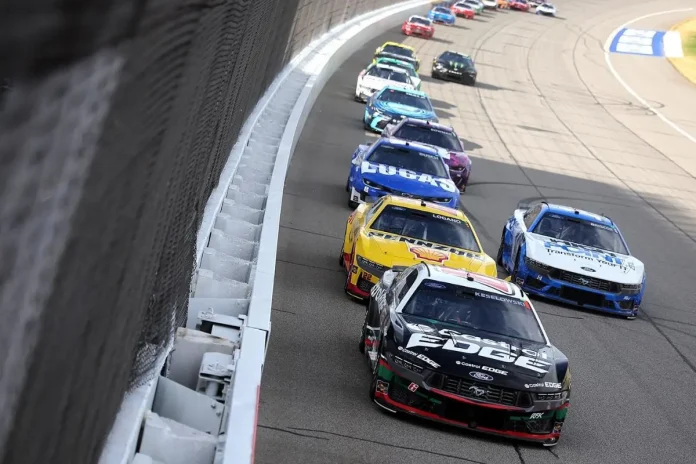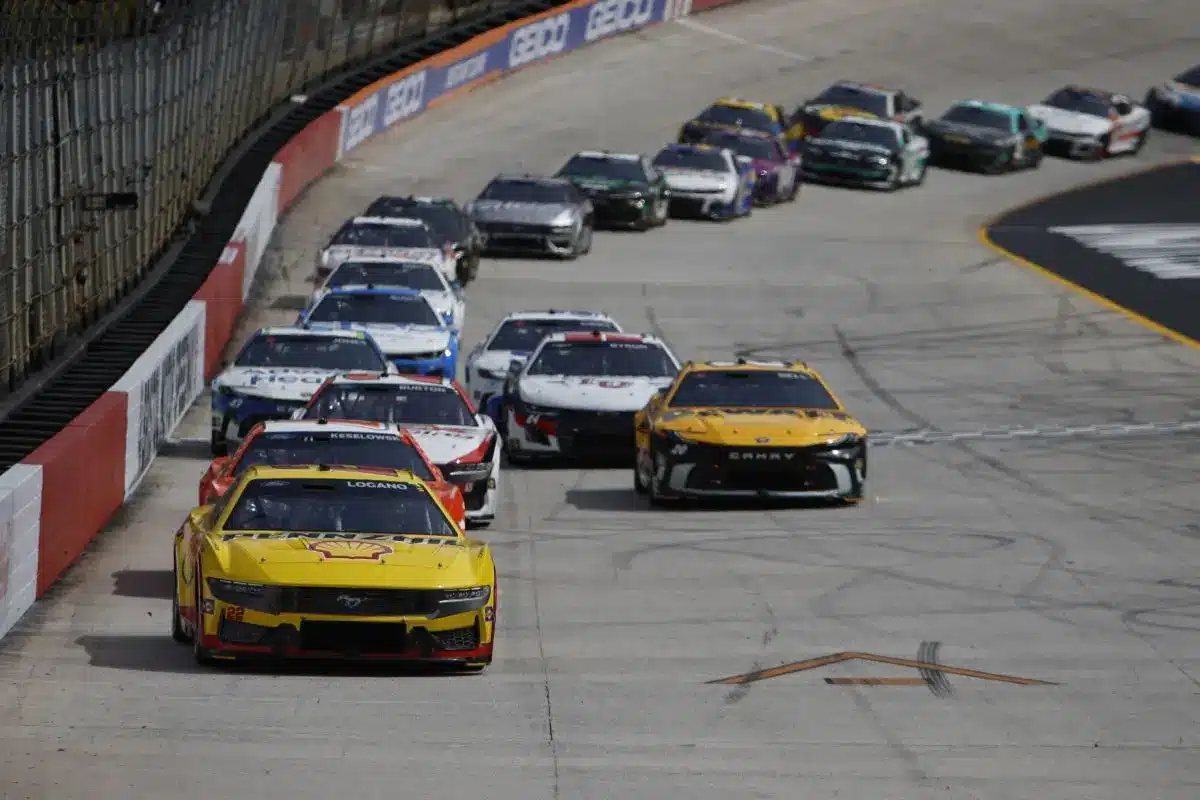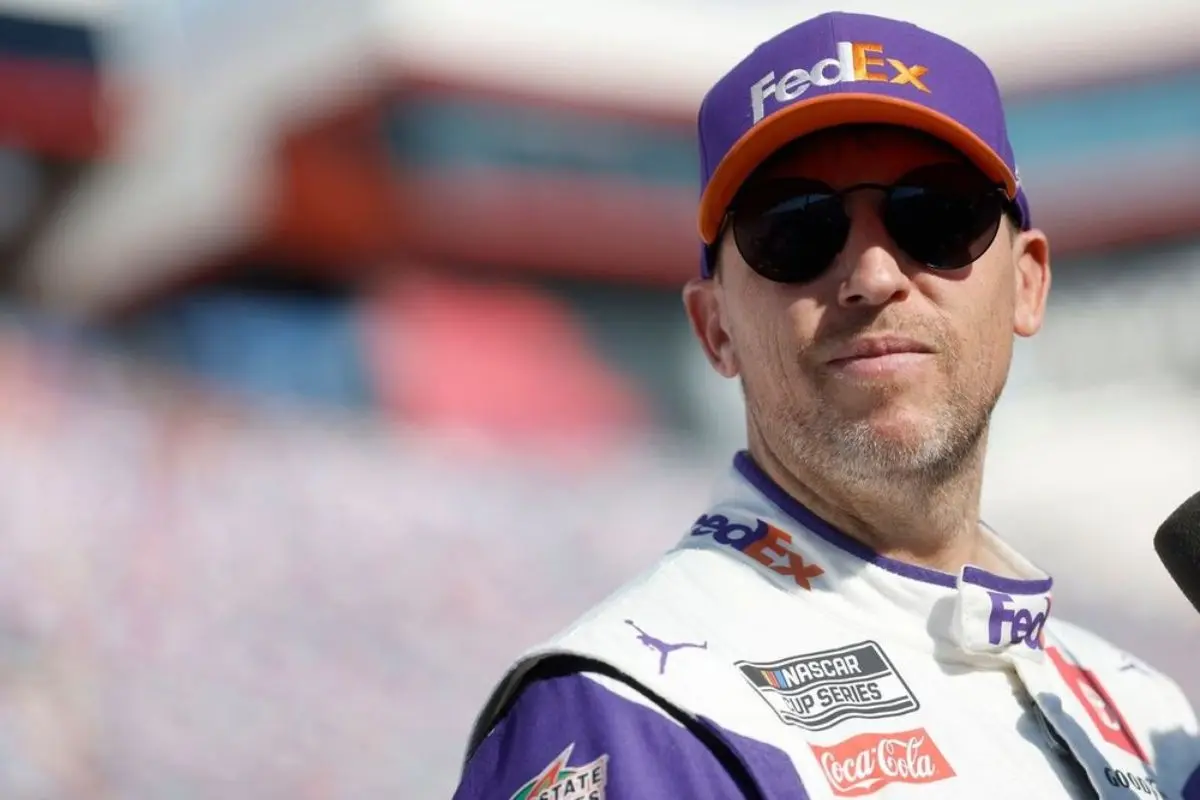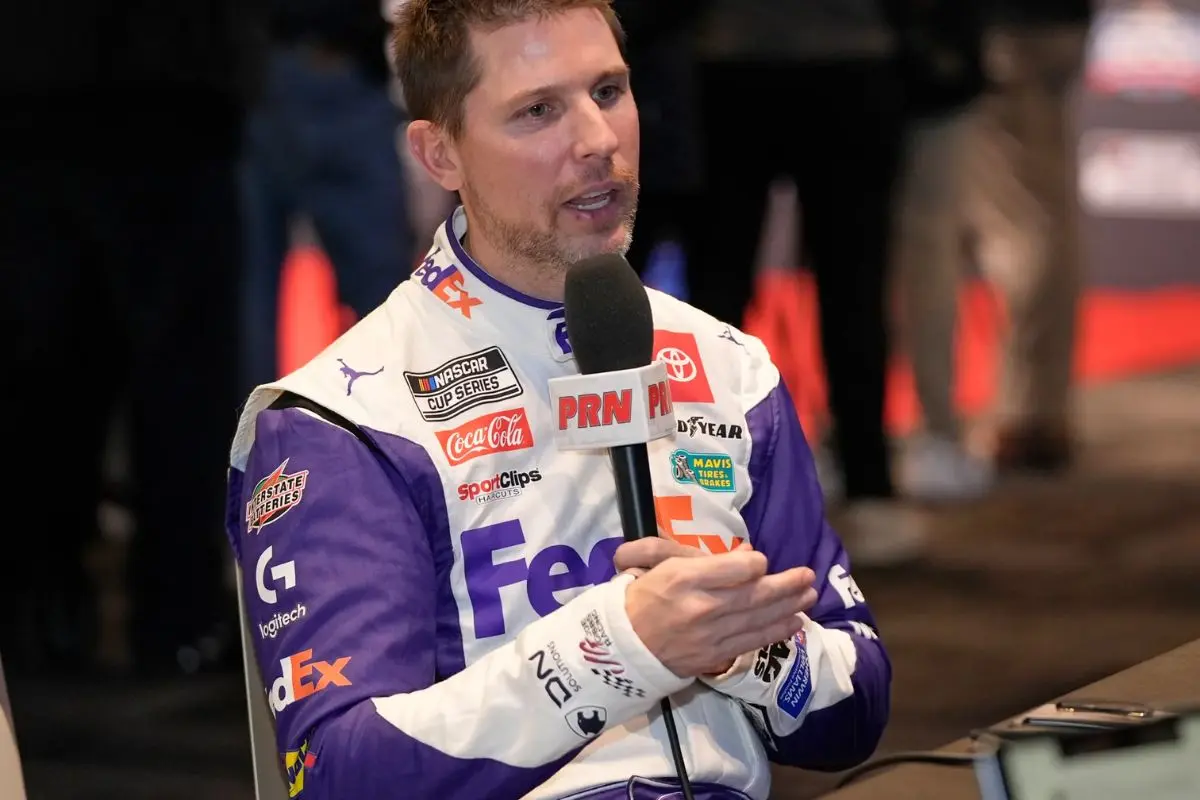NASCAR’s New Tire Just Another Gimmick: NASCAR’s new tire compound aims to boost competition at Martinsville, utilizing a softer left tire to improve dynamics. However, mixed reactions from veterans and insiders raise concerns about whether this change is an effective solution or merely a temporary gimmick. While some believe it could increase overtaking opportunities, others, like Steve Letarte, warn that familiar racing patterns may persist. Denny Hamlin expresses cautious optimism, noting the necessity of tire wear for tactical racing. Ultimately, the true impact of the new tires remains uncertain and merits further examination for a clearer understanding of their potential effects on competition.
Key Highlights
- NASCAR veterans express skepticism about the new tire’s ability to significantly change racing dynamics, fearing it may lead to predictable outcomes.
- The introduction of a softer left tire raises concerns about increased tire wear, potentially negating any competitive advantage.
- Steve Letarte cautions that familiar racing patterns may persist despite tire changes, questioning the effectiveness of the new compound.
- Denny Hamlin’s cautious optimism highlights the uncertainty surrounding the new tire’s impact on overtaking and race strategy.
- Overall, mixed reactions among insiders suggest that the new tire could be perceived as a temporary gimmick rather than a true innovation.
NASCAR Implements Changes to Short-Track Package Ahead of Martinsville Race
What modifications can be expected to improve competition in NASCAR‘s short-track format? In a bid to heighten the competitiveness of races, NASCAR is implementing crucial changes to its short-track package, particularly for the Martinsville Speedway event.
Following a race at Bristol where Kyle Larson’s dominance raised concerns about the overall competitive balance, NASCAR’s decision to introduce a new tire compound reflects a tactical response to these challenges.
The left tire will now utilize Goodyear’s softest compound to date, a notable shift aimed at enhancing tire management dynamics. This alteration is designed to create variability in performance, compelling teams to navigate the complexities of tire wear and degradation more acutely.
Meanwhile, the right tire will remain unchanged from those employed at North Wilkesboro and Richmond, presenting teams with a dual approach to tire strategy. This juxtaposition is expected to encourage more intricate decision-making processes during the race, potentially leading to increased overtaking opportunities and closer competition.
While the intention behind these modifications appears sound, the efficacy of the new tire compound in achieving the desired outcomes remains to be seen. The challenge lies in whether these adjustments will translate into a more exhilarating racing spectacle or merely serve as a temporary fix to persistent issues.
Ultimately, the success of NASCAR’s revised short-track package hinges on its ability to balance engineering innovation with the inherent unpredictability of racing dynamics.
Mixed Reactions from NASCAR Veterans and Goodyear on New Tire Compound
NASCAR’s decision to implement a new tire compound has sparked a spectrum of reactions among veterans in the sport and officials at Goodyear. The introduction of a softer compound is anticipated to improve speed on the track, yet it raises concerns regarding increased tire wear. This duality may create a scenario where teams must balance the pursuit of speed against the necessity of tire durability, potentially resulting in tactical opportunities for overtaking during races.
Greg Stucker, Goodyear’s director of racing, highlighted the significance of tire falloff, asserting that it can lead to exciting race dynamics, as evidenced by recent results at Richmond. His comments suggest that the new compound could promote a more competitive environment, where tire management becomes a pivotal aspect of race strategy.
“We come to Martinsville with that same right-side tread compound as part of the setup teams will run, along with a left-side tire that utilizes the ‘softest’ tread compound in our tire lineup…We had a good test there in August and came out of it with this setup, which is another step forward on our short-track package.” – Greg Stucker
“We sure hope it creates some interesting racing, and how it’s all going to work out, it’s one of those deals where we’re really not going to know until we get them all out there on Sunday.” – Brad Moran
View this post on Instagram
However, veteran crew chief Steve Letarte offers a more tempered perspective. He cautions fans to manage their expectations, noting that teams have historically adapted to tire-related challenges. Letarte’s insights imply that while the new tire may seem promising, it is likely that Martinsville will resemble previous short-track races, characterized by established racing patterns rather than a groundbreaking experience.
“We had tires at the all-star race that weren’t going to run 25 laps, they could have run them 200. Then we had tires at Watkins Glen, I mean they were going to slow down five seconds. You weren’t going to be able to race that whole nine yards. Like the garage area adapts, I’m not saying Goodyear’s wrong, I’m not saying their approach is wrong. I’m saying let’s give credit to the 36 teams, the engineers, the drivers. They are not out there driving with a freaking sledgehammer like they know what they are doing, they can feel the tire.” – Steve Letarte
This divergence in viewpoints reflects a broader tension within the NASCAR community about the efficacy of changes made to improve racing. While some anticipate innovation, others remain skeptical, fearing that the sport may ultimately revert to familiar outcomes despite the introduction of new technology.
Denny Hamlin Emerges as a Key Contender for Martinsville Success
Denny Hamlin stands out as a formidable contender heading into the Martinsville race, improved by his impressive record of five victories at the 0.526-mile track. This short track, known for its tight turns and tactical racing, plays to Hamlin’s strengths, particularly his adeptness in managing tires and maneuvering restarts. As NASCAR championship favorites face the looming threat of elimination, Hamlin’s experience positions him as a potential frontrunner in a such environment.
Steve Letarte, a respected analyst, emphasizes Hamlin’s tire management skill as a vital asset. In races where tire degradation can greatly impact performance, Hamlin’s ability to pace his tires throughout the event may prove essential. This skill allows him to maintain competitive lap times while conserving grip, especially during late-race restarts when the pressure is highest. Letarte’s confidence in Hamlin’s understanding of tire strategy raises the expectation for his performance at Martinsville.
“Someone like Denny, I actually think this suits Denny very very well. I think he knows how to use the tire on the restart, then settle in and save a ton of tire. So it may look a little different. But if someone is thinking it’s going to look like nothing we have seen the last four years then they are going to be disappointed it’s not going to completely change what it looks like.” – Steve Letarte
Moreover, Hamlin’s familiarity with the nuances of the track—such as line selection and defensive driving—further boosts his chances of success. The ability to read competitors and adjust strategies in real-time is paramount, particularly in a race where every position counts.
As the race unfolds, Hamlin’s blend of experience, tire management, and tactical insight positions him as a key player, potentially shaping the narrative of this vital face-off. With the stakes as high as they are, fans and analysts alike will be watching closely to see if Hamlin can translate his skill into another Martinsville victory.
Denny Hamlin Shares Cautious Optimism About New Tires and Martinsville Race Outcome
How will the new tire compound impact the dynamics of the upcoming Martinsville race? Denny Hamlin, a seasoned competitor who has yet to secure a victory at Martinsville with the next-gen car, expressed a blend of hope and apprehension regarding the introduction of this new tire.
On his podcast, Actions Detrimental, Hamlin articulated his desire for the tire to generate considerable wear, which he believes could improve racing dynamics and facilitate more overtakes. This sentiment highlights a broader concern within the NASCAR community about the potential for tires to alter race strategies fundamentally.
Hamlin’s cautious optimism is tempered by an acknowledgment of uncertainty. He remarked, “I wish I knew, because I would try to prepare for it,” highlighting the unpredictability that comes with new equipment. Given that he currently sits 18 points below the NASCAR playoff cut line, a strong finish at Martinsville is critical for his Championship aspirations.
“I wish I knew, because I would try to prepare for it. But we’ve got a new tire there that’s going to be the softest left-side tire that I think NASCAR has ever made, or Goodyear has ever made. The right-side is the, I think, like the prime tire softness. Hopefully, we get some tire wear. I mean that’s what we hope is that we have tires that wear out and then you start to see some comers and goers and lots of passing. That’s what we hope.” – Denny Hamlin
A top-three result could potentially secure his advancement to the NASCAR Championship 4, contingent on the performances of rival drivers.
The stakes at Martinsville raise the importance of the new tire’s impact. If the compound indeed encourages higher tire degradation, it may lead to varied pit strategies and more aggressive driving, elements that could reshape competition.
However, without definitive evidence of these changes, the NASCAR community remains skeptical. Consequently, Hamlin’s performance will be a litmus test for the efficacy of the new tire and its true influence on the race outcome.
News in Brief: NASCAR’s New Tire Just Another Gimmick
The introduction of a new tire compound for the Martinsville race has elicited mixed reactions from NASCAR veterans and the tire supplier, Goodyear. While some express skepticism regarding the efficacy of this change in enhancing the racing experience, others, including driver Denny Hamlin, exhibit cautious optimism. Ultimately, the performance of the new tire will determine whether it signifies a meaningful advancement in competitive racing or merely constitutes another gimmick within the sport.
ALSO READ: NASCAR’s Rainy Day Dreams Collapse as Goodyear’s Tire Test Fails to Deliver




